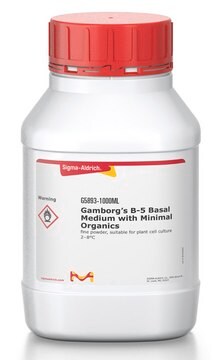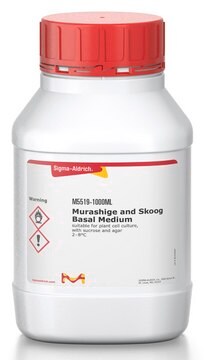M3128
Myristic acid
Sigma Grade, ≥99%
Synonym(s):
1-Tridecanecarboxylic acid, C14:0, NSC 5028, Tetradecanoic acid
About This Item
Recommended Products
biological source
Elaeis guineensis kernels
grade
Sigma Grade
Assay
≥99%
form
powder or flakes
bp
250 °C/100 mmHg (lit.)
mp
52-54 °C (lit.)
functional group
carboxylic acid
lipid type
saturated FAs
shipped in
ambient
storage temp.
−20°C
SMILES string
CCCCCCCCCCCCCC(O)=O
InChI
1S/C14H28O2/c1-2-3-4-5-6-7-8-9-10-11-12-13-14(15)16/h2-13H2,1H3,(H,15,16)
InChI key
TUNFSRHWOTWDNC-UHFFFAOYSA-N
Looking for similar products? Visit Product Comparison Guide
Application
- Description of Ewiss cheese, a new ewe′s milk cheese processed by Swiss cheese manufacturing techniques: microbiological, physicochemical and sensory aspects.: This study details the production of Ewiss cheese, focusing on the microbiological and physicochemical properties, including the use of myristic acid in enhancing flavor and texture profiles (Garofalo et al., 2024).
- Experiments and Molecular Simulations to Study the Effect of Surface-Active Compounds in Mixtures of Model Oils on CO2 Corrosion during Intermittent Oil-Water Wetting.: Investigates how myristic acid, as a surface-active compound, influences CO2 corrosion mechanisms in oil-water systems, offering insights into corrosion prevention strategies in the oil industry (Norooziasl et al., 2024).
Biochem/physiol Actions
Storage Class Code
11 - Combustible Solids
WGK
nwg
Flash Point(F)
>235.4 °F - closed cup
Flash Point(C)
> 113.00 °C - closed cup
Personal Protective Equipment
Certificates of Analysis (COA)
Search for Certificates of Analysis (COA) by entering the products Lot/Batch Number. Lot and Batch Numbers can be found on a product’s label following the words ‘Lot’ or ‘Batch’.
Already Own This Product?
Find documentation for the products that you have recently purchased in the Document Library.
Customers Also Viewed
Articles
Lipid Induced Insulin Resistance
Our team of scientists has experience in all areas of research including Life Science, Material Science, Chemical Synthesis, Chromatography, Analytical and many others.
Contact Technical Service








